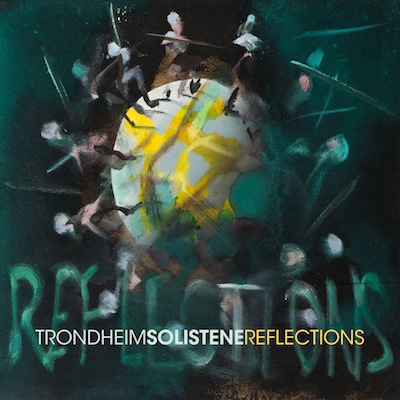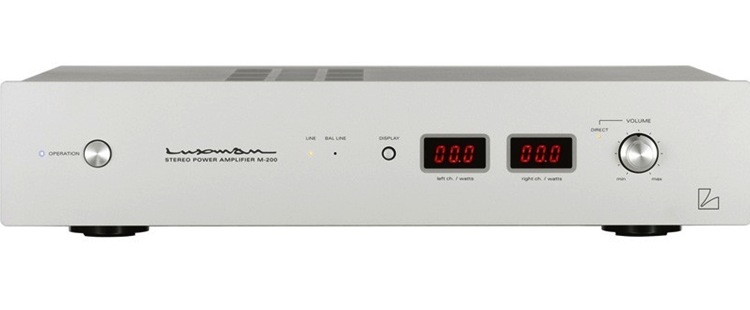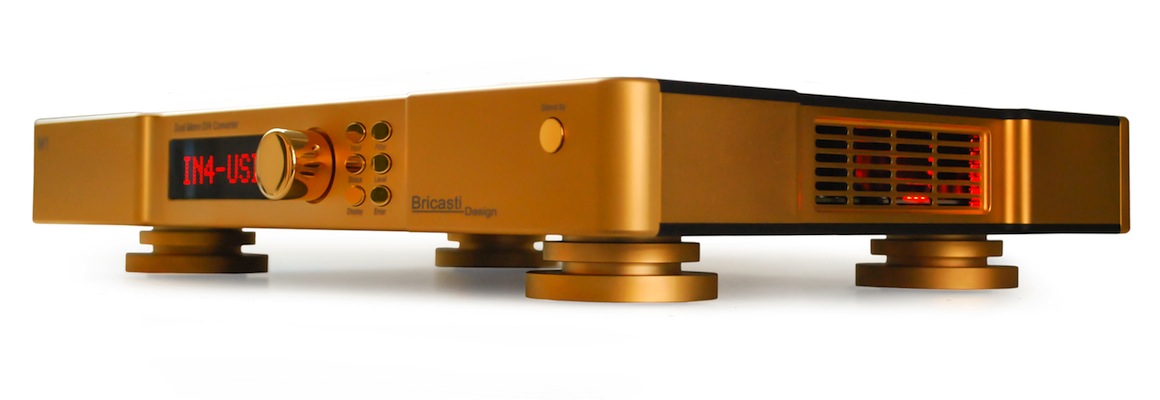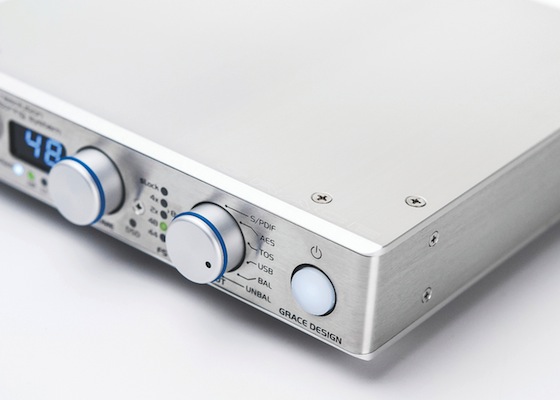
Category: Sponsors and Friends
Some companies have shown their faith in this enterprise by becoming sponsors. Whether a company does so makes no difference in my decisions as to which products to write about.
Say “Saluton!” To “Future Audiophile.”

Jerry del Colliano started out as a music student, studying music and Music Business courses in tandem. Then, in the 1990s, he was hired by Christopher Hansen Ltd., the legendary Los Angeles high-end audio dealer. In a twinkling, Jerry’s passion for music catapulted him into the upper echelons of audio retailing, being a standout seller of Wilson Audio Specialties loudspeakers. Del Colliano later worked for (the man; the myth; the legend!) Mark Levinson, at Cello Music and Film, also in Los Angeles.
He later went into media and web journalism, publishing AudioRevolution.com, HomeTheaterReview.com, and AudiophileReview.com. More recently, he has launched a new webzine targeting younger music lovers and the audiophile-curious.
The “Unique Selling Propositions” of Future Audiophile are that audiophile “terms of art” (or, if you prefer, jargon) are usually linked to definitions or explainers; and that there is a standard template that all equipment reviewers must follow.
The Future Audiophile review template is so Socratic in method that it gives me flashbacks to law school… but it serves the purpose of reining in authorial flights of fancy (or, recountings of free trips to Sardinia for molto gelato gratuito–ahem).
Examples:
What Makes the Parasound Halo P 6 So Special?
Why Should You Care About the Parasound Halo P 6 ?
Some Things You Might Not Like About the Parasound Halo P 6
Listening to the Parasound Halo P 6 Preamplifier…
Does the Parasound Halo P 6 Have Any Resale Value?
Who Is the Competition for the Parasound Halo P 6?
Final Thoughts on the Parasound Halo P 6 Preamplifier
… you get the idea.
In an email, del Colliano told me that he is “aiming to reach younger and more diverse fans who are looking more for the lifestyle benefits of listening to music, as opposed to some of the more voodoo-inspired black magic that the hobby sometimes flirts with.” He also told me that Future Audiophile has “reviewers who have over 40 years of audiophile experience, as well as audiophile reviewers who just turned 40 years old.”
So, I wish them much success.
Note, I do not plan to write for Future Audiophile, in that I have been neglecting my own blog, and I have a hugely important recording project in the works.
# # #
Hyperion Knight at the Alexander Piano
What is it about Australians, New Zealanders and Tasmanians and grand pianos??? At the ripe age of 15 years, Adrian Mann asked his piano teacher how long a piano bass string would have to be, not to require a copper wire over-wrap (to add mass, and thereby lower the resonant frequency). Her answer was, “Very long.” Over the next several years, young Adrian taught himself to build a piano almost entirely from scratch; the result is nearly 19 feet long. He is now doing business under the name Alexander Piano. Hyperion Knight was on tour in that part of the world, and so he stopped in, with the above result. There are two other Hyperion K. videos on Alexander Piano’s YouTube page.
# # #
Trondheim Soloists: Vaughan Williams, Fantasia on a Theme of Thomas Tallis, etc.

Trondheim Solistene: Reflections
(Music of Britten, Vaughan Williams, and Stravinsky)
SACD/CD +Blu-ray 2-disc set, 2L 125
CDQ; high-resolution stereo including MQA and DSD; and surround-sound downloads available from www.2L.no
Streaming available from various services linked to here.
Recorded June and August 2015, Selbu Church, Norway. Recording producer and balance engineer Morten Lindberg; recording technician Beatrice Johannessen.
Certain pieces of music just catch the ear. Some of those pieces even enter into the collective repository of culture—they become part of the sonic landscape (or the musical memories) of nearly everybody’s life.
A prime candidate for the title of “The Most Well-Known Piece of ‘Classical’ Music That Was Not Composed by Vivaldi, Beethoven, or Gershwin” is Samuel Barber’s Adagio, in its string-orchestra version. Barber’s Adagio for Strings combines striving with yearning (and grief with resignation) in a completely arresting and inescapably memorable way.
Most music lovers don’t realize that the version they know so well is a transcription—that the “Adagio” of movie and pop-culture renown started out life as the slow movement of Barber’s Op. 11 string quartet.
The point of this blog entry then, is to tell as many people as possible that if you love Barber’s Adagio, you will love Ralph Vaughan Williams’ Fantasia on a Theme by Thomas Tallis. The Tallis Fantasia has the same sweeping grandeur and emotional intensity as Barber’s Adagio, but I think it is even more rewarding to engage with over repeated hearings.
More background, a making-of video, and sound bytes, after the jump. Continue Reading →
A Summer Sunday’s Afternoon at Tanglewood
 Photo © 2016 John Marks
Photo © 2016 John Marks
On Sunday, August 14, the musically-astute friend I mentioned in the context of the Andris Nelsons Boston Symphony Wagner/Sibelius CD and I traveled to Lenox, Massachusetts, where the Boston Symphony makes its summer home at Tanglewood. The program consisted of Beethoven’s Op. 64 Coriolan Overture (1807), his Piano Concerto 3 (1800-1801), and Schumann’s Symphony 4 (1841/1851).
But of course, I could not resist indulging in audio geekery, in the process making a new pro-audio friend! Geek-bait photos, official concert photos, and a link to streaming audio of the concert, all after the jump! Continue Reading →
Luxman M-200 Stereo Power Amplifier

(Images courtesy of On a Higher Note, LLC)
If the amplifier budget for your bedroom or office stereo (or some other modest but high-quality audio system) stretches to multiples (about five times as much) of the price of the over-performing at its price point ($349) Parasound Zamp v.3, I heartily recommend Luxman’s (US MSRP) $2000, refined and elegant M-200 power amplifier.
(Note, the M200 has a defeatable front-panel manual-only volume knob, so its inputs can be set either to Direct or Variable, allowing it to be used with one fixed-output source such as a CD player. Luxman also makes a matching DAC/pre with the same form factor, the DA-200.)
The M-200’s output is “only” 25Wpc, but I found it completely capable of driving the prototype Esperanto Parolanto loudspeakers, a moderately inefficient load (83dB/1W/1m). The M-200 runs warm, but in my experience, it never ran hot. Continue Reading →
Bricasti M1 “Limited” Digital-to-Analog Converter

Yes, what you see is what you get (if Santa Claus really likes you, that is): A Bricasti M1 Digital-to-Analog Converter with gold-plated casework. United States Manufacturer’s Suggested Retail Price, $15,000. (Why do I hear echoes of Auric Goldfinger gloating, “No, Mr. Bond; I expect you to die!“)
Bricasti is a Massachusetts, USA company that was started by three exiles from Harmon International’s Lexicon division: Brian, Casey, and Tim. Hence the corporate name, which would warm the cockles of any trademark lawyer’s heart: Yes! Unique! My puckish sense of humor has at times led me to suggest to the unwary that “Bricasti” is the coastal resort town just North of Brindisi. As Peter McGrath would say, that has the ring of “near-truth” to it.
Bricasti, no surprise, started out in the professional-audio field, offering a “we will cut no corners” reverberation unit that quickly became the Gold Standard in its field. Why? Well, cutting no corners is a good place to start. Continue Reading →
Grace Design m920 (Steinway and Sons office systems, Part IV)

Grace Design m920 (Steinway and Sons office systems, Part IV)
Digital-to-Analog Converter, Line Stage, and Headphone Amplifier
Made in Lyons, Colorado, USA; US MSRP $1995
For the stereo systems I specified for use in two of the executive offices at Steinway and Sons’ global headquarters in New York City, my major design goals were fatigue-free yet detail-rich listening (for hours at a time), flexibility, and future-proofness. Given that the major source was going to be USB computer audio or wireless streaming, I wanted a digital-audio source component that had multiple digital inputs, the ability to decode not only conventional PCM digital data but also Direct Stream Digital (DSD) files, was of professional-grade build quality, and which sounded just plain great. Oh, and also not break the budget. (Note, the Grace m920 on its own does not handle wireless; in these systems, an Audioengine wireless receiver unit outputs S/PDIF to the m920 via a Toslink optical digital cable.)
Grace Design’s m920 DAC/HPA/linestage filled that bill admirably. Please click through to learn more, and also to learn how to get an additional $100 off the lowest advertised price, as a thank-you for reading The Tannhaüser Gate! Continue Reading →
We So Rarely Hear About the Good That Is Done in the World
It almost goes without saying that the mainstream media long ago fell into a sensationalist rubric of, “If it bleeds, it leads.” So a Jeremiad from me about that would be almost pointless.
Please click for the continuation. Continue Reading →
A feisty little stereo amplifier! (Steinway & Sons office systems, Part II)

Parasound’s Zamp v.3 stereo amplifier
One of my favorite lines from the original Star Trek TV series (and please, nobody forget that Alexander Courage’s theme music borrowed heavily from Mahler’s symphonies 1 and 7) was something like:
I bet five Quatloos on the feisty newcomer!
Well, Parasound’s Zamp v.3 is hardly a newcomer, but, it’s very feisty! And, at a US Suggested Retail Price of $349, it is a stellar bargain.


